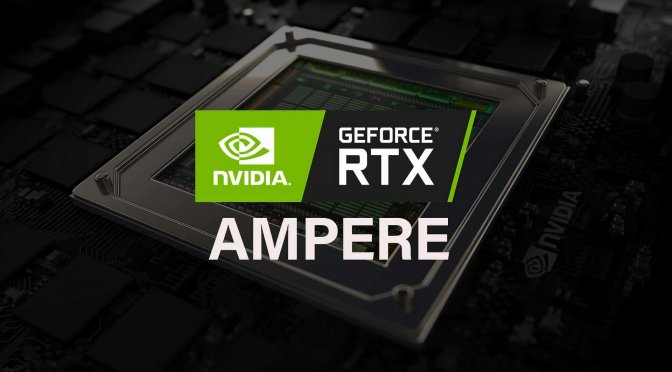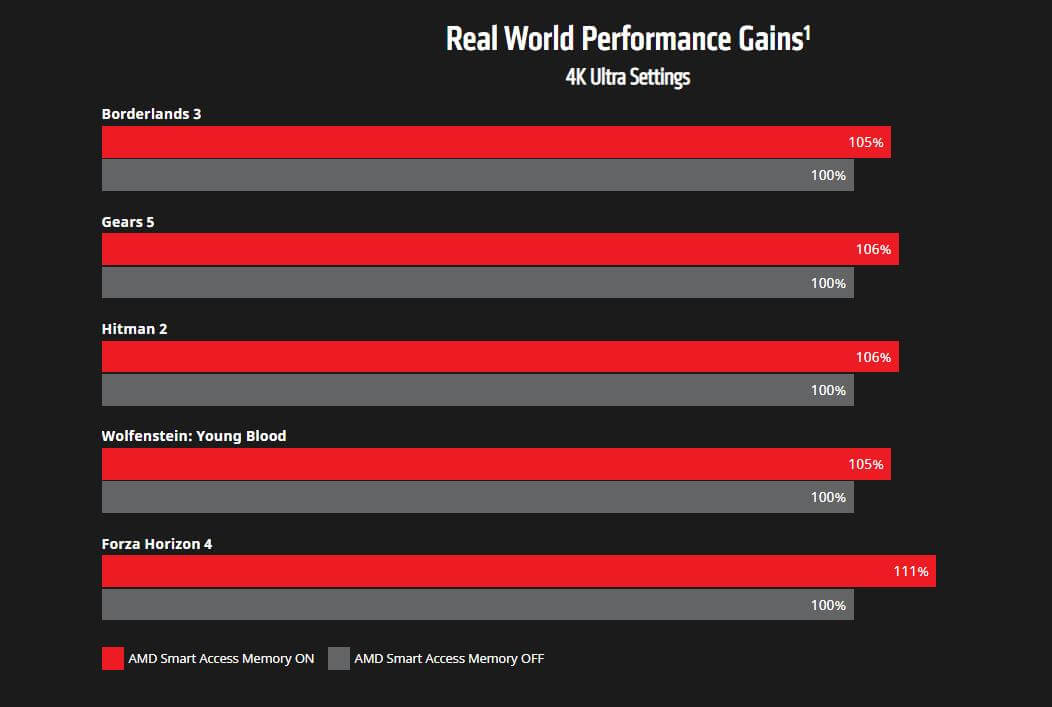In a recent statement to GamersNexus NVIDIA has just confirmed that they are also working on their own SAM or Smart Access Memory feature similar to what AMD has enabled on their RDNA 2 GPU lineup.
Nvidia has confirmed that this SAM feature will be enabled on all the GeForce RTX 30-series Ampere GPUs via future software updates. Thus, Nvidia GPUs are also going to leverage a similar feature which might give them an upper hand in Games as well. Though, this remains to be seen.
From NVIDIA, re:SAM: “The capability for resizable BAR is part of the PCI Express spec. NVIDIA hardware supports this functionality and will enable it on Ampere GPUs through future software updates. We have it working internally and are seeing similar performance results."
— GamersNexus (@GamersNexus) November 12, 2020
Hard to fit in a tweet, but basically, they're working on enabling the same feature as AMD Smart Access Memory (AMD GPU+CPU=Perf uplift) on both Intel and AMD. No ETA yet. Doesn't look like it'll be ready before RX 6000 launch, but we'll keep an eye on development.
— GamersNexus (@GamersNexus) November 12, 2020
Just in case you didn’t know, AMD recently detailed three new RDNA 2 features: RAGE Mode, Smart Access Memory and Infinity Cache. This move from NVIDIA seems like an official response to AMD’s Smart Access Memory technology.
More importantly, the green team has also confirmed that resizable BAR is actually a part of the PCI-Express specifications, and NVIDIA’s existing hardware fully supports this functionality. NVIDIA has stated this SAM feature is going to be enabled through future GPU driver/software updates, and it will be compatible with both AMD and Intel processors.
Both Intel and AMD CPU-based systems will be fully supported; whereas AMD’s solution will only work with its latest Ryzen 5000-series CPU lineup and compatible X570 motherboards. AMD Motherboards will also require the latest AGESA 1.1.0.0 firmware update.
“We have it working internally and are seeing similar performance results.”- NVIDIA.
This new technology feature will not require a PCIe Gen 4-compatible platform as it will be supported by PCIe Gen 3 systems as well. BAR basically defines how much discrete GPU memory space can be mapped. Modern PCs are typically limited to 256 MB of mapped memory.
It is typical today for a discrete graphics processing unit (GPU) to have only a small portion of its frame buffer exposed over the PCI bus. For compatibility with 32bit OSes, discrete GPUs typically claim a 256MB I/O region for their frame buffers and this is how typical firmware configures them.
A GPU, supporting resizable BAR, must ensure that it can keep the display up and showing a static image during the reprogramming of the BAR.
This feature is rather important for graphics hardware, because the PCI BARs are usually limited to 256MB while on modern cards you can easily find 4GB or more VRAM. The end result is that only a fraction of that VRAM is CPU accessible, causing a whole bunch of workarounds in the driver stack for that hardware.
AMD says that with SAM they can access all of the GPU memory, thus removing any bottlenecks. This will also allow for faster performance. In conventional Windows-based PC systems, processors can only access a fraction of graphics memory (VRAM) at once, limiting system performance.
With AMD Smart Access Memory, the data channel gets expanded to harness the full potential of GPU memory, utilizing the bandwidth of PCI Express to remove the bottlenecks and increase performance.
As you can see below AMD recently shared one chart showing the performance gains coming from this SAM feature in 4K AAA gaming. With SAM enabled we can see a 11% boost in Forza Horizon 4, and 5-6 % gains in games like Borderlands 3, Gears 5, Hitman 2 and Wolfenstein Young Blood.
To explain this feature in more details, and to reiterate, AMD’s new Smart Access Memory feature will boost the overall gaming performance by optimizing the data transfer between the CPU and the GPU.
What this basically means is that the Radeon RX 6000 GPUs can now work and operate in tandem with AMD’s Ryzen 5000-series processors, provided you use a 500-series compatible motherboard, through this new Smart Access Memory feature.
AMD Smart Access Memory –“An exclusive feature of systems with AMD Ryzen™ 5000 Series processors, AMD B550 and X570 motherboards and Radeon™ RX 6000 Series graphics cards.
It gives AMD Ryzen™ processors greater access to the high-speed GDDR6 graphics memory, accelerating CPU processing and providing up to a 13-percent performance increase on a AMD Radeon™ RX 6800 XT graphics card in Forza Horizon™ 4 at 4K when combined with the new Rage Mode one-click overclocking setting”.
Smart Access Memory aims at optimizing both the GPU and CPU to offer the best possible performance when they operate in tandem.
According to the concept, once you enable the Smart Memory Access feature in the RX 6000 card’s VBIOS and the motherboard BIOS, both the CPU and GPU will gain full access to each other’s memory. Doing this will maximize data transfer and performance between the CPU and the GPU’s VRAM.
Smart Access Memory helps boost performance by enabling faster data transfer speeds between the CPU and GPU. And by pairing this efficient data transfer smart access feature with the new 128MB Infinity Cache might help boost the throughput between the CPU and the GPU as well.
The new Infinity Cache takes advantage of the GPU’s data paths to maximize performance while minimizing the data movement and power within the GPU itself. According to AMD, Infinity Cache delivers a 10% increase in power efficiency and it also doubles the bandwidth (almost 117% increase), all at a lower power than traditional memory.
Infinity Cache is based on the Zen CPU’s L3 cache design. Infinity Cache boosts performance-per-clock scaling as frequency increases largely because the GPU is now less constrained by external memory bandwidth limits. The Infinity Cache also boosts ray tracing performance, as more of the data set is kept closer to the compute units to feed.
It remains to be seen how much of a performance boost this SAM feature gives on both AMD and Nvidia’s hardware.
Stay tuned for more!
Hello, my name is NICK Richardson. I’m an avid PC and tech fan since the good old days of RIVA TNT2, and 3DFX interactive “Voodoo” gaming cards. I love playing mostly First-person shooters, and I’m a die-hard fan of this FPS genre, since the good ‘old Doom and Wolfenstein days.
MUSIC has always been my passion/roots, but I started gaming “casually” when I was young on Nvidia’s GeForce3 series of cards. I’m by no means an avid or a hardcore gamer though, but I just love stuff related to the PC, Games, and technology in general. I’ve been involved with many indie Metal bands worldwide, and have helped them promote their albums in record labels. I’m a very broad-minded down to earth guy. MUSIC is my inner expression, and soul.
Contact: Email



